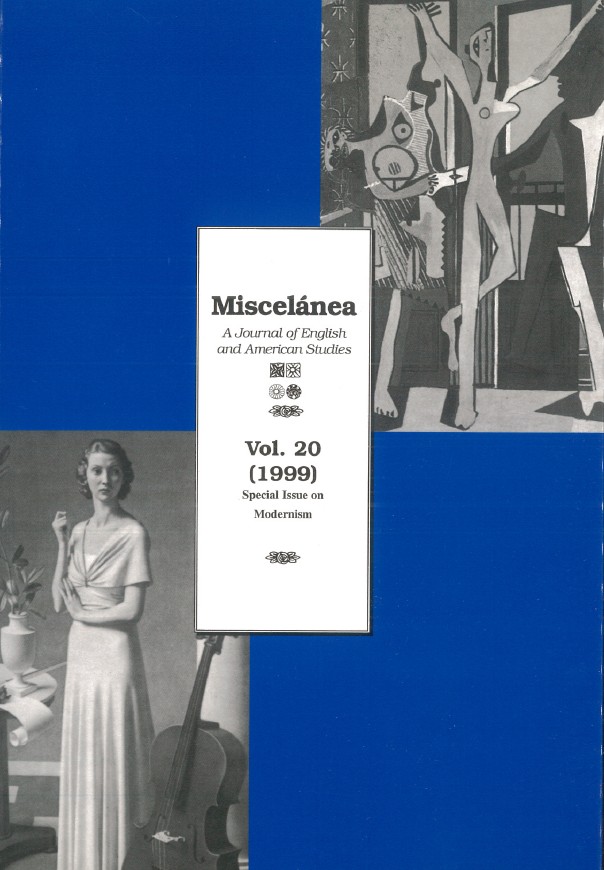Modernism in Transition: The Expatriate American Magazine in Europe between the World Wars
DOI:
https://doi.org/10.26754/ojs_misc/mj.199911235Resumen
La generación de expatriados estadounidenses que pasó el periodo de entreguerras en Europa cautivó la imaginación de críticos y lectores durante todo el siglo XX. Pero aunque conocemos sus obras -y mucho sobre sus excesos personales- se ha prestado relativamente poca atención a la forma en que facilitaron su éxito literario. Para muchos escritores expatriados de Ammán, las pequeñas revistas ayudaron a imprimir material que los editores comerciales no tocaban, y la flexibilidad de estas publicaciones permitió el intercambio de textos entre Europa y Estados Unidos. Dado que los escritores modernos se «autocanonizaban», en realidad contribuyeron a la «escritura» del modernismo: podemos ver muchos de los hilos del canon moderno en estas pequeñas revistas. Pero la tensión que sentían los editores de pequeñas revistas -la tensión entre un impulso vanguardista de abandonar la tradición y un deseo más conservador de reformar el arte para incluir sus visiones- también es inherente al modernismo. Este ensayo subraya la importancia de la pequeña revista para la escritura moderna de los expatriados estadounidenses y trata de contextualizar aún más esta escritura dentro del propio modernismo.
Descargas
Referencias
"Broom in America". 1923. Broom 5 (2) (September): n.p.
CARNEYALI, Emanuel. 1925. "Sorrow's Headquarters". This Quar_ter (Spring): 3ff.
COWLEY, Malcolm. 1961. Exile's Return: A Literary Odyssey of the 1920s. London: Bodley Head.
"Editorial". 1937. Booster 2 (7) (September): 5.
EZRA POUND PAPERS, General Collection. Beinecke Rare Book and Manuscript Library. Yale University: New Haven, Connecticut.
FORD, Hugh. (ed.). 1972. The Left Bank Revisited: Selections from the Paris Tribune, 1917-1934. London: Pennsylvania State U. P.
HOFFMAN, Frederick J., Charles ALLEN, and Carolyn F. ULRICH. 1946. The Little Magazine: A History and a Bibliography. Princeton: Princeton U. P.
"Introduction". 1927. transition 1 (April): 135-138.
JOLAS, Eugene. 1931. "transition: An Epilogue". American Mercury 23 (90) (June): 185-192.
JOSEPHSON, Matthew. 1922. "Made in America". Broom 2 (3) (June): 266-270.
---. 1962. Life Among the Surrealists. New York: Holt, Rinehart, and Winston.
KALAIDJIAN, Walter. 1993. American Culture Between the Wars: Revisionary Modernism and Postmodern Critique. New York: Columbia U. P.
KREYMBORG, Alfred. 1925. Troubador: an Autobiography. New York: Boni and Liveright.
LOEB, Harold. 1959. The Way It Was. New York: Criterion. "Manifesto I". 1921. Broom 1(1) (November): n.p.
MATTHEW JOSEPHSON PAPERS, General Collection. Beinecke Rare Book and Manuscript Library. Yale University: New Haven, Connecticut.
MUNSON, Gorham. 1922a. "Expose No.I" . Secession I (Spring): 22-24.
---. 1922b. "Interstice Between Scylla and Charybdis". Secession 2 (July): 30-32.
---. 1922c. An Old Song to New Music". 1922. Secession I (Spring): n.p.
---. 1985. The Awakening Twenties: A Memoir-History of a Literary Period. Bat Rouge: Louisiana State U. P., on "The New Review". 1931. New Review 1(2) (May, June, July): n.p.
PAIGE, D. D. (ed.). 1950. The Selected Letters of Ezra Pound, 1907-1941. London: Faber and Faber.
POUND, Ezra. 1928a. "Desideria". Exile 3 (Spring): 108.
---. 1928b. "The Exile". Exile 3 (Spring): 102-107.
"Story". 1931. Story I (1) (April/ May): n.p.
WALSH, Ernest. 1925. "Editorial". This Quarter (Spring): 259-260.
Descargas
Publicado
Número
Sección
Licencia

Esta obra está bajo una licencia internacional Creative Commons Atribución-NoComercial 4.0.


